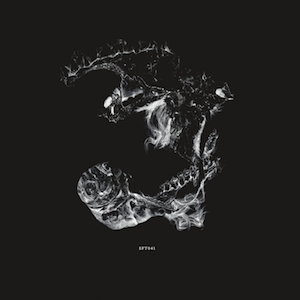Thug Entrancer Death After Life
Relatively unknown until last fall, Ryan McRyhew (a.k.a. Thug Entrancer) first found his footing as […]

Relatively unknown until last fall, Ryan McRyhew (a.k.a. Thug Entrancer) first found his footing as a budding artist in Denver’s spirited experimental scene, crafting a range of ambient synthscapes and chilly, percussive workouts for his self-released Tropics Mind EP series. In 2011, he relocated to Chicago’s south side; culling new inspiration from the city’s bubbling footwork and juke scene, he took some of that intense local energy and injected it into his own conceptual, hardware-based approach. With a fresh artistic perspective, McRyhew then created Death After Life—his debut LP for the Software imprint, a Brooklyn label driven by the meta, idiosyncratic style of its primary curator, Daniel Lopatin.
Though Thug Entrancer’s latest work may not sound much like last year’s offerings from the likes of folksy techno producer Huerco S. and the trigger-happy Slava, his addition to the Software stable is hardly a surprise. McRyhew’s signing continues the label’s patronage of niche artists with clearly defined viewpoints, which has made for an erratic back catalog of both minor classics and overblown statements. Death After Life is Software’s first release of 2014, and it’s a purist’s dream; recorded with analog hardware, negligible overdubs, and zero sampling, the album establishes tight parameters and spends 50 minutes thoroughly exploring them. By recontextualizing footwork and juke in a limited analog palette, the LP has few stylistic precedents. At times evoking a more sinister, lucid take on Aphex Twin’s early work, it also manages to remain true to Chicago’s and Denver’s recent musical history.
Death After Life is structured in seven chapters (along with two bonus cuts on the CD and digital edition) delineated by Roman numerals—an intentional choice on McRyhew’s part to link his constricted cuts together as one thematic arc. Opener “Death After Life I,” one of the record’s highlights, leads off with a swirling acid melody that laps its skittering rhythm in hypnotic spirals, establishing a haunting, dire mood for the rest of the LP. The other immediate standout, “Death After Life IV,” pairs a step-sequenced synth arpeggio with rampant percussion that worms around it like an unsettled reverie. Footwork is a huge influence on the entire record, but looms particularly large on “Death After Life V”‘s insistent clatter over glacial pads, and “Death After Life VII”‘s snare and handclap bombast. In contrast, “Death After Life II” and “Death After Life VI” present a more atmospheric, unhurried side of Thug Entrancer’s sound, summoning delayed synths to gurgle above the surface in sedate formations.
McRyhew’s debut LP remains generally consistent in quality and presentation, but there are some baffling moments. The finale of “Death After Life III,” for example, fades into almost two minutes of harsh, ambulance-like noise, providing an inexplicable and unsatisfying end to a rolling acid jam. Furthermore, when the album is consumed as a whole, its self-imposed restrictions seem to suffer from diminishing returns. At this point, it’s unclear whether Thug Entrancer will continue to adhere to such a strict aesthetic and production methodology, or if Death After Life is merely a stepping stone to other conceptual worlds, which will have their own unique rules to govern them. Perhaps McRyhew will follow a similar path as Lopatin’s Oneohtrix Point Never project, which refreshes its sonic palette for each album. Ultimately, only time will tell, but as things stand now, his Death After Life LP is unquestionably a strong and inventive first full-length.

